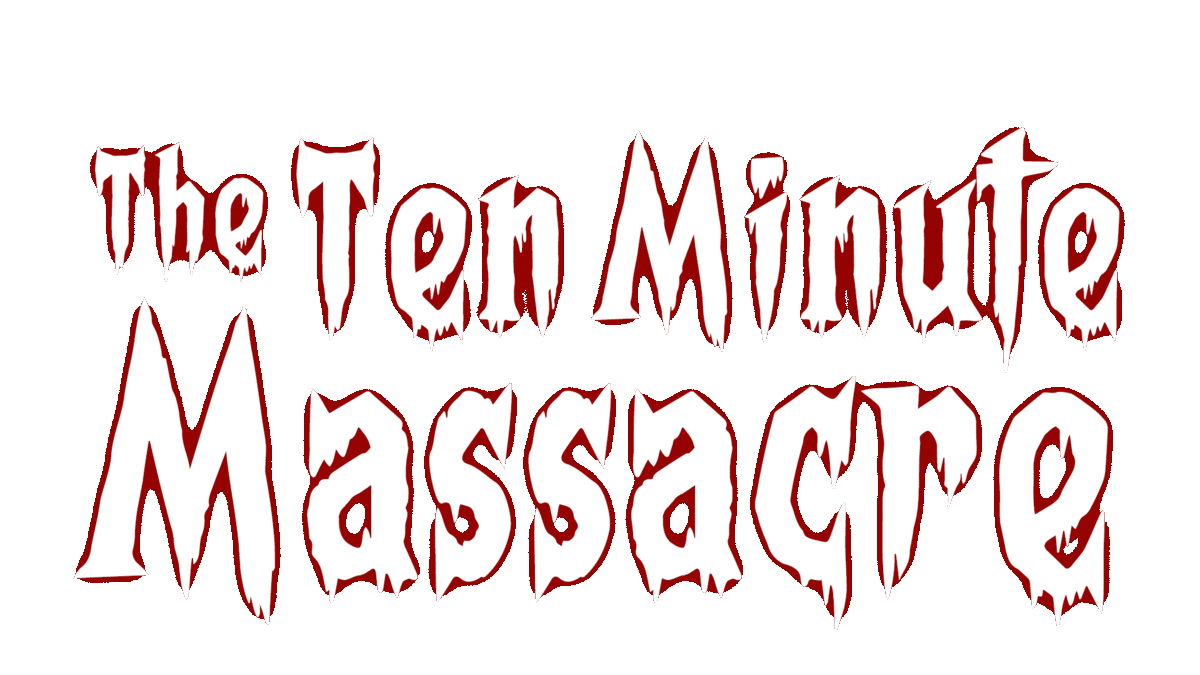Seinfeld: Pilot vs S1Ep2
- Audrey E Lorber

- Feb 25, 2020
- 6 min read
Updated: Oct 6, 2021
For a show about nothing, a lot can be said about the similarities and differences between the first episode of the first season and that of the second. Seinfeld premiered clunkily as The Seinfeld Chronicles in July 1989 after NBC inquired Jerry Seinfeld about writing a television program. Jerry discussed this situation with his friend, comedian and writer Larry David, over lunch and the two wrote a pilot (Armstrong). Pilot episodes of beloved shows are always a little weird to re-watch. Most of the time the show just has not found its distinct tone yet. Often there is also character flip-flopping and a few other discrepancies to the rest of the series in a pilot.
In Seinfeld, there are few major series inconstancies in the pilot, “Good News, Bad News” to the series at large and S2Ep1 “The Ex-Girlfriend”. The show’s only listed writing credits (aside from editors) on IMDB until 1991 is Larry David and Jerry Seinfeld. So the writing of the two first episodes is consistent, but there is a change in direction. Art Wolff directs the pilot and the pilot only. Tom Cherones steps in to direct the second episode of season one, the season two premiere, and 79 other episodes. In the pilot, the classic jazzy bass Seinfeld theme song plays over Jerry’s opening stand-up. The theme song and transition jingles are canon in the first episode to the rest of the series, but the style of the opening credits in the pilot are never seen again.
The show’s pilot- not to be confused with Season 4 Episode 23 entitled “The Pilot”,which is literally about the characters in the show pitching a pilot of their own show about nothing- begins with the way most audience members would have recognize Jerry Seinfeld at the time: on a stage, doing standup. Having already appeared several times on The Tonight Show and even having a few HBO specials, Jerry Seinfeld was a popular comedian. His character’s introduction to the show was smart as Jerry was written as a fictionalized version of himself. Onstage, Seinfeld deliberates his opinions on going out and how we all just want to go back home once we are out: peak relatable content.
The second scene begins in a restaurant I am not quite familiar with. Jerry and George are eating at… Pete’s Luncheonette? I am used to an establishing shot of the Tom’s Restaurant neon sign and then seeing some main characters in a booth like in the first episode of season two and every other episode. Seinfeld is meeting with George for lunch- typical- but at a round table with chairs. A round table with chairs!? Okay so the seating arrangement is unforgivable to me honestly,but what makes it worse is instead of having Elaine as the token female member of the gang,the pilot gives us a monotone waitress named Claire. “NBC president Warren Littlefield said she was cut because as a waitress,she’d only ever be in diner scenes and would never be a real part of the gang” (White). George complains a little about his coffee and the two talk about women and discuss semantics.
The show really starts off to be one about nothing and is honestly a little boring. The third scene is Jerry doing a load at the laundromat,and get this? He and George are still having the same conversation they were having in the diner about what constitutes as a date. Oh wait, they also share their thoughts on laundry etiquette. The next scene is another stand-up scene. It is also about laundry. So what a first-time spectator might infer is that Jerry Seinfeld is an every-man kind of guy. He’s just like you! I personally think a lot of the comedy in the show holds up. Few jokes just do not sit the right way,sure,but as young comic and director Bo Burnham once said “Imagine a nation of young people being deprived of the white-hot comedy of Jerry Seinfeld,” satirically regarding Jerry Seinfeld’s recent comment about not performing at colleges anymore because audiences were too politically correct.So that sucks to hear, but lots of the show does not reflect this comment.
Next scene, is the first in Jerry’s apartment. As a Seinfeld fan, this scene was jarring. As most pilots go,the furniture and set-up of the apartment are not completely consistent with the rest of the series. In another scene in Jerry’s apartment in the pilot, Jerry, George, and Kessler go over the do’s and don’ts of having women over. Who is Kessler and why does he knock on Jerry’s door and own a dog? Kessler is played by Michael Richards, the same actor who portrays Kramer in every other episode of Seinfeld. Kramer, however, distinctly does not knock on Jerry’s door as the character’s signature move is his comedically abrupt entrance into Seinfeld’s apartment. The name discrepancy is actually tied up slyly in the last season in a flashback sequence in which the name “Kessler” is the name on Kramer’s door buzzer when he first moved in and in perfect Kramer fashion, he did not remove it (Nigro). Also, that dog is just never seen again and is likely just used to integrate a joke.
So from the pilot, the formula is step one: Jerry does a general, relatable stand-up. Next, Jerry introduces something that is going to happen in the episode. He discusses it with his friends in the diner. Then there’s a cycle of stand-up relating to the prior scene and a narrative-driven scene and so on. Also, there is just no Julia Louis-Dreyfus at all in the pilot and this is a major concern and critique of mine. According to the mini behind-the-scenes documentary on the Seinfeld: Season 1 DVD, Julia Louis-Dreyfus comments that not only was she unaware of this pilot episode until 2004, but she has never even seen it (Stice). Honestly, I do not blame her.
Seinfeld was a monumental game-changer and rightfully acclaimed sensation. The show was so popular,it has been said that Frank Sinatra made it to the hospital so quickly on the night of his death because everyone was home watching the season finale of Seinfeld (Tolsky). Seinfeld was not always regarded as something that could become a marvel nine season show, let alone even a two season one. “NBC executives were on the fence about the show, fearing that it was just ‘too New York and too Jewish.’ NBC’s head of late night programming, Rick Ludwin was able to convince the network to produce four more episodes.None of them did especially well,but when NBC reran the pilot in 1990 it received a Nielsen rating of 13.9, better than its original score of 10.9. This helped convince the Network to produce another season” (Stice).
The second season opens with Jerry doing stand-up about traffic. Relatable comedy consistency? Check.In the next scene, George laments to Jerry how he wrongfully reciprocated an “I love you” to a woman he wants to break up with. Soon, Elaine joins the two in the car. Yes, you read that correctly. Jerry owns and drives around a car in New York City. Ridiculous, I know, but it is somehow not an inconsistency. There are multiple plots in the series that feature the car, that by the way, is not at all mentioned in the pilot. Once in the vehicle, Elaine brings up neighbor etiquette. A lot of this show is one character bringing up a situation that occurs in everyday life and then opening the floor for the other characters to give their opinions on it, mulling over semantics and pet-peeves. This is also the formula in the pilot, which makes sense because there is no change in the writing staff until season 3. The rest of the episode plays out similarly to the first episode cycle of narrative-driven scenes and respective stand-up comedy performances.
So, Seinfeld had a shaky beginning. Larry David even remembers saying goodbye to Jerry after the pilot was filmed because he did not think he would see him again for a few of years (Mellor). Nobody could have seen the eventual and unprecedented success of the show about nothing from the pilot episode. Under new direction, the swapping of a round table for a booth, and the addition of the legendary Julia Louis-Dreyfus after “Good News, Bad News”,Seinfeld began to find its groove and grow an audience. Elaine, Kramer, George, and Seinfeld would go on to become beloved and eccentric caricatures of the everyday New Yorkers that fell in love with the show’s reflections on life’s semantics.
Works Cited
White, Brett. “'Seinfeld' Aired Its Bizarro Pilot 30 Years Ago Today.” Decider, Decider, 5 July 2019, decider.com/2019/07/05/seinfeld-pilot-30-anniversary/.
Armstrong, Jennifer Keishin. Seinfeldia: How a Show about Nothing Changed Everything. Simon & Schuster Paperbacks, an Imprint of Simon & Schuster, Inc., 2017.
Tolsky, Molly. “Nancy Sinatra Missed Her Father's Death Because of 'Seinfeld' Finale.” Jewish Telegraphic Agency, 11 Dec. 2019, www.jta.org/jewniverse/2018/nancy-sinatra-missed-her-fathers-death-because-of-seinfeld-finale.
Nigro, Nicholas J. Seinfeld FAQ: Everything Left to Know about the Show about Nothing. Applause Theater & Cinema Books, An Imprint of Hal Leonard Corporation, 2015.
Stice, Joel. “What Was The Deal With The 'Seinfeld' Pilot? Here Are 10 Things You Probably Didn't Know About It.” UPROXX, UPROXX, 12 Mar. 2019, uproxx.com/tv/10-fascinating-facts-about-the-seinfeld-pilot/3/.
Mellor, Louisa. “Seinfeld: From Flop to Acclaimed Hit.” Den of Geek, 31 May 2016, www.denofgeek.com/us/tv/seinfeld/241125/seinfeld-from-flop-to-acclaimed-hit.












Comments